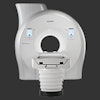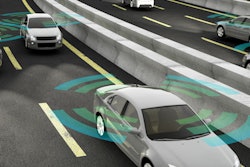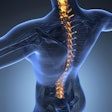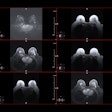
MR is an effective breast cancer screening tool for women with a higher lifetime risk of the disease. But its availability can be limited, and sociodemographic factors may play more of a role in access than women's breast cancer risk factors, according to a new study published in the Journal of the American College of Radiology.
Researchers found that sociodemographic factors such as race were related to excess travel time to obtain breast screening MR exams, while breast cancer risk factors were not.
 Tracy Onega, PhD, from Dartmouth College.
Tracy Onega, PhD, from Dartmouth College."Mammography has been shown to be readily available in most geographic areas of the United States," wrote lead author Tracy Onega, PhD, of Dartmouth College, and colleagues. "However, advanced breast imaging modalities, such as breast MR, have more limited geographic accessibility and may be imposing travel burdens on women who seek breast MR examinations."
This lack of access can negatively affect a woman's health, Onega told AuntMinnie.com.
"The use of breast MR is expanding across the most common indications, from screening and diagnosis to preoperative evaluation," she said. "We want to make sure women who need breast MR can access it."
How long does it take?
Onega's group examined screening mammography and breast MR exams performed between 2005 and 2012 at Breast Cancer Surveillance Consortium (BCSC) facilities, estimating travel time to the closest mammography facility for the women, as well as to the facility actually used.
The researchers also looked at women's breast cancer risk factors and sociodemographic characteristics such as their race and ethnicity, education level, and geographic location. During the period included in the study, 821,683 mammography exams and 3,687 breast MR exams were performed (JACR, March 22, 2016).
The team found that fewer than a quarter of the women traveled beyond their closest breast imaging center for mammography, while almost half did so for breast MR -- with 25% of those traveling an extra 40 minutes one way. Rural women had an almost 3.5 times greater likelihood of additional travel time to mammography, and 14 times greater likelihood of additional travel time for breast MR.
Black women were less likely than white women to travel beyond their closest facility for screening mammography, but more than 2.5 times as likely to travel for breast MR -- indicating a racial disparity in access to advanced breast imaging, according to the researchers.
"We thought risk factors would be related to willingness to travel farther to access breast MR, but we found that was not necessarily the case," Onega told AuntMinnie.com. "It's not risk that's affecting women's use of breast MR, but standard socioeconomic barriers, which further widens the disparities in the use of the technology."
More work to be done
The study has limitations, Onega and colleagues conceded, including the lack of a validated measure of what women themselves think is acceptable travel time for breast imaging services. But the results do suggest there is more work to be done to tease out the reasons why women may not have equal access to advanced breast imaging modalities such as MR -- and to rectify the situation.
"Our study highlights the fact that women may need to have a better sense of their breast cancer risk, and an awareness that breast MR is an option for screening if they're at higher risk," Onega said. "Perhaps services such as patient navigation could help women who are eligible for breast MR to better access the closest facility."



















